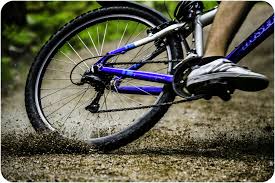Mechanics
One exciting thing from mechanics is the drifting of a bicycle on a slippery surface with loose sediments.

One exciting thing from mechanics is the drifting of a bicycle on a slippery surface with loose sediments.

| Name | Symbol | Unit | Type |
|---|---|---|---|
| average speed | v | m/s, meters/second | scalar |
| distance | d | m, meter | scalar |
| time | t | s, second | scalar |
| average velocity | v | m/s, meters/second | vector |
| displacement | Δx | m, meter | vector |
| velocity, instantaneous velocity | v | m/s, meters/second | vector |
| acceleration | a | m/s2, meters per second2 | vector |
| Force | F | N, newtons | vector |
| mass | m | kg, kilogram | scalar |
| Coefficient of friction | μ | No unit! | scalar |
| Momentum | p | kg · m/s, kilograms · m/s | vector |
| Impulse | J | N · s, newtons · second | vector |
| Power | P | W, watts | scalar |
| centripetal acceleration | ac | m/s2, meters per second2 | vector |
| centripetal force | Fc | N, newtons | vector |
| radius | r | m, meters | scalar |
acceleration, position, displacement, distance, normal force, inertia, momentum
A car traveling on a straight road at 15.0 meters
per second accelerates uniformly to a speed of
21.0 meters per second in 12.0 seconds. The
total distance traveled by the car in this
12.0-second time interval is
(1) 36.0 m (3) 216 m
(2) 180. m (4) 252 m